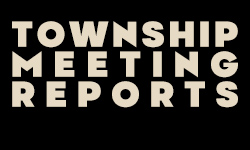by Charles Marohn
"I got a question from a good friend who challenged me that I was being anti-growth, that if we followed Rational Response #5, communities would do mostly maintenance and even then a high percentage of those projects wouldn't pencil out.
BINGO!
For a real ROI calculation, we have to make sure we are talking about dollars. Engineers, planners, economic development professionals and other advocates of the current approach have become quite skilled at concocting phony ROI numbers. Your analysis needs to be from the local government's point of view, which means a real evaluation of dollars in versus dollars out.
Understand that if this was easy, we would already be doing it. As you start to undertake Rational Response #5, you are going to find that pretty much all of the projects you were doing in the old system have a negative ROI. Your professional staff, your development community and others used to the current growth paradigm will want to throw up their hands. They will ask, "What are we supposed to do?"
The answer: We're supposed to do projects that make our community more prosperous.
When we start to have a conversation about how to rationally respond to this complex set of problems we have created for ourselves with our post World War II development experiment, Rational Response #1 was to stop. Stop building more of the projects that are providing a negative return to the community, gradually sucking the wealth out of it.
Stop is very dissatisfying because, when faced with a problem, human nature prompts us to do something. We don't elect the politician that promises to do nothing, after all. So after we've stopped and reassessed our approach, we need to ensure that the capital investments we make from now on have a real return on investment.
The current project set you have and the recent projects you have done won't pencil out. That's the point. We're doing things wrong today and a rational response is going to help you change to something that works. For projects to pencil out financially for the community, they are going to look different than they do today. Be ready for that.
Finally, your staff is also likely to tell you (if they are being forthright) that for some projects this math can't be done, that they can't really know what the real return on investment will be because they don't know how a development is going to build out. Those projects would be correctly called "gambling" and gambling is something that should be left to the private sector.
Cities are guardians of the public balance sheet, not gamblers at the casino. If your ROI analysis requires you to assume future growth rates to make things balance, you're doing it wrong.
For cities to prosper and build real wealth, growth needs to be in small increments over a broad area (just like your diversified retirement account). Making incremental improvements in high productivity areas while changing our model to facilitate incremental development approaches (something we can hardly even grasp today in the age of the dsiposable strip mall / big box store) are other Rational Responses we will touch on in the future.
In the meantime, check out this piece I wrote earlier this year about building a local government growth portfolio and then this one on the barbell strategy."
- from Rational Response #5, Require a Real Return on Investment, by Charles Marohn, writing at the Strong Towns blog.


